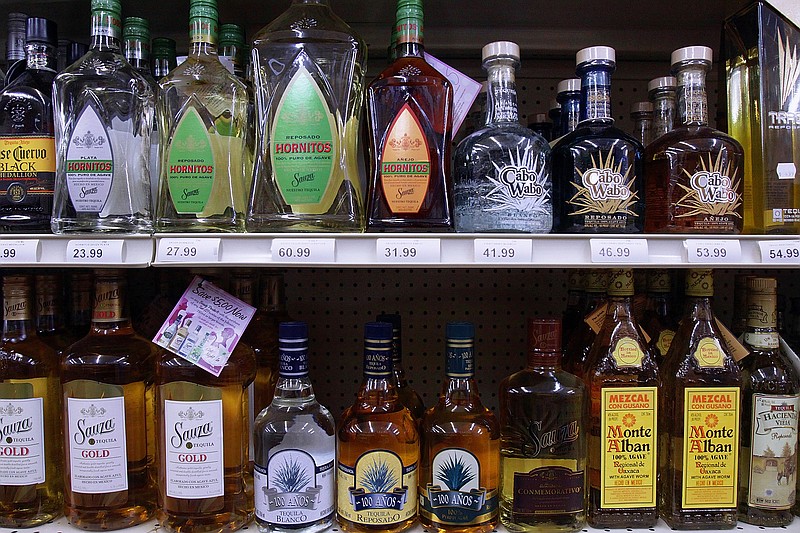Any assessment of a county's health in 2020 without mention of the coronavirus feels somehow inadequate, but The Sycamore Institute's recently released 2020 health profiles report of Tennessee counties provides an updated baseline with which to track the state's nearly 7 million residents.
The organization, an independent, nonpartisan Tennessee public policy research center, bases its county profiles on four drivers of health - social and economic environment, health behavior, clinical care and physical environment - and uses the most recent statistics available (remember - before the advent of the virus).
Hamilton County is ranked 20th for overall health out of the state's 95 counties. Of the state's four largest cities, it ranks well below Davidson County (Nashville), which is seventh, and Knox County (Knoxville), which is ninth. However, it ranks significantly higher than Shelby County (Memphis), which is 61st.
Unfortunately, it slipped seven notches from its 13th ranking in the organization's first county health profiles assessment in 2018.
Despite that drop, the county improved in most health measures over the last two-plus years. That leads us to conclude that a number of other counties must have improved their health more than Hamilton County did over the same period.
In the most recent report, the county is better than the state average in numerous categories:
* Population in fair/poor health (19.1%)
* Adults with diabetes (10.8%)
* Obese adults (30.9%)
* Overweight/obese students (34.4%)
* Low birth weight babies (9%)
* Drug overdose deaths (20.1 per 100,000 people)
* Adult smokers (19.2%)
* Physically inactive adults (23.2%)
* Severe housing problems (13.5%)
* Poverty rate (13.7%)
* Unemployment rate (3.2%)
* Uninsured adults under age 65 (11.9%)
* Educational attainment (39.7% with an associate's degree or more)
* Median household income ($53,035)
* Mental health providers (213 per 100,000 people)
But it is worse than the state average in:
* Poor mental health days (4.6 out of the last 30)
* Pregnant women receiving adequate prenatal care (53.4%)
* Crime rate (89.5 incidents per 1,000 people)
* Air quality (9 micrograms of particulate matter per cubic inch)
* Excessive drinkers (17.5%)
In every aforementioned category but three for which there is a national average, Hamilton County is worse than the national average. Only in percentage of obese adults, excessive drinkers and percentage of people with severe housing problems are we better than the national average.
In fact, even though we're below the national average, we're the worst county in the state - 95th - in excessive drinkers.
Yet, Hamilton County improved from 2018 in adults with diabetes, obese adults, overweight/obese students, low birth weight babies, poverty rate, educational attainment, unemployment rate, median household income, crime rate, adult smokers, physically inactive adults, pregnant women receiving adequate prenatal care, mental health providers, air quality and severe housing problems.
Hamilton County worsened, though, in population in fair/poor health, poor mental health days, overweight/obese students, drug overdose deaths, excessive drinkers, uninsured adults under 65 and pregnant women receiving adequate prenatal care.
In addition to excessive drinkers, we also finished in the bottom 10 in the state (88th) in crime rate.
Counties contiguous to Hamilton also had categories in which they no doubt would like to improve.
For instance, Marion and Sequatchie counties were 93rd and 94th, respectively, in pregnant women receiving adequate prenatal care, while Grundy - also in Southeast Tennessee - was 95th.
The coronavirus is likely to shake up many of the numbers, including unemployment, uninsured, poverty, housing and income rates. It also is likely to increase the percentage of poor mental health days, population in fair/poor health, physically inactive adults, drug overdose deaths, excessive drinkers and women receiving adequate prenatal care.
Suicide is not one of the categories in the profile, but it is tied to many of the above numbers and also is likely to increase until life returns to normal after the global pandemic.
It appears Hamilton County specifically has a need for help with excessive drinkers and that Southeast Tennessee needs assistance with women getting adequate prenatal care.
No snapshot of state and county health is perfect, but The Sycamore Institute's assimilation of a raft of health numbers gives health officials an idea of where - if they don't know already - some of the trouble spots are.
